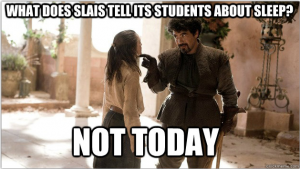From slightly annoying to a downright nightmare, sometimes we have to moderate our SM platforms, whether it be because of trolling, rude/disrespectful users, or simply to protect our members. To highlight this issue I follow with a brief overview of Facebook Pages/Open Groups (henceforth “open groups”) vs. Closed Groups (ask/invited to join), however, these concepts can be extended to other platforms, such as LinkedIn or Google+.
Visibility
Open groups are useful for communicating with a large number of users. Once published, they and the content within are “theoretically” visible to anyone with a Facebook account. Closed Groups, in contrast offer flexibility in terms of visibility, two options available being ‘closed’ (users can see group name, but not content within) and secret (group name not publicly listed anywhere, user notified by invite).

Creating a Facebook Group
Note: recently Facebook has allowed content previews of open groups, so that persons not logged in or without a Facebook account, can preview what they are “missing out on”.
Access Control/Content Control Balance
Any/all users may connect with an open group, making it a good avenue if you don’t want to have to approve connections.

As an open group, we have managed to gain many more likes than you would imagine given a somewhat limited community engagement. To the right, you can see in the video link, we repost videos that aren’t ours in the hopes of attracting users 🙂
Content posted by you and users will be pushed to them, and their friends’ and followers’ news posts. This is great for marketing, but comes at the potentially high cost in effort expended controlling the content of your group, as these users by default are allowed to post any content within the group.

You can be sure this will find its way across all SLAIS Facebook pages shortly! 😀 gosh this guy trolls!!
Closed groups either allow you to request access, are can be setup so that you are invited to access. Restricting members can bring certain benefits, for example, you can share content that you do not want the public to access (e.g. http://digitaldarkroomsecrets.com/join-our-private-facebook-groups/). Whilst these groups can be victim to open group content control issues, the argument is that it is on a much smaller scale, and given potentially stronger ties, you could reach out and ask the offending person to stop such behaviour.
Regardless of open or closed groups, you can ban all users from posting to your group, essentially becoming a 1-way communication channel. All schemes also allow you to ban a user, protecting other members from particularly offensive persons.
I thought this might be a useful post that *cough * could be referenced *cough* in those Facebook groups that need to be made for the final project 😀
The Essential Resources:
Facebook Group Privacy and Abuse




